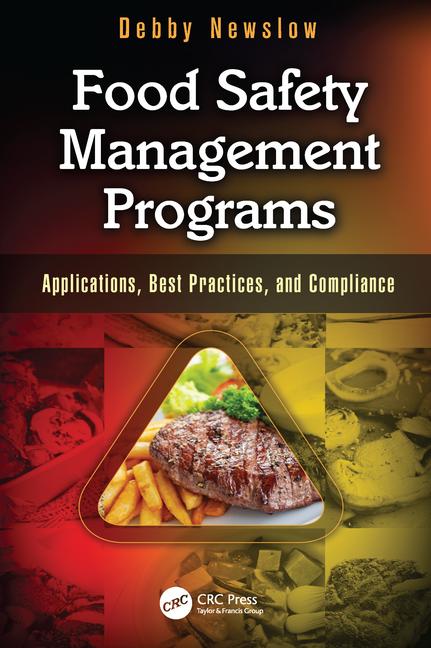Mission Critical: Cultivating a Culture of Food Safety Excellence
For a future of food safety excellence, companies must reimagine leadership competencies and focus on human skills

Image credit: AleksandarGeorgiev/E+ via Getty Images
The landscape of regulations, standards, and protocols has evolved over the years in the relentless pursuit of safer food practices. Yet, despite the increased measures implemented, the needle on foodborne illness statistics has not budged significantly in the past several decades.1 This stagnation begs a critical question: Are new regulations and "best practices" actually improving food safety outcomes for consumers?
We find ourselves at a crossroads where addressing these questions is not merely a matter of regulatory compliance, but also a mission-critical imperative for the food industry. Even with a heightened emphasis on food safety culture, progress to improve outcomes remains elusive. To unravel this conundrum, we must delve into the very essence of food safety culture and its multifaceted components.
In 2015, E. De Bocek et al. presented a comprehensive perspective on food safety culture, delineating it into three interdependent aspects:
- Company characteristics
- Food safety management systems
- Outputs.2
While the latter two components often dominate discussions within the industry, it is the first aspect—company characteristics—that warrants deeper exploration. Company characteristics house the organizational fabric elements that are responsible for the overarching food safety culture observed, measured, and felt within the organization. While this includes the traditional values, beliefs, and norms associated with food safety culture, it also includes other aspects such as leadership, communication, commitment, resources, and risk awareness.
Traditionally, the industry has predominantly fixated on the technical dimensions of food safety culture —understandably so, given its scientific and systematic nature. However, as professionals ascend the ranks and assume leadership roles, the narrative must evolve beyond technical proficiency to encompass the intangible yet pivotal realm of people and culture.
Exceptional organizations recognize that fostering a robust food safety culture hinges on solid food safety management systems and processes and the quality of leadership driving them. Relying solely on technical expertise is not sufficient; leaders must nurture environments where individuals feel a sense of belonging, engagement, and empowerment. Yet, despite the expanding recognition of the importance of organizational culture, a stark reality persists: many companies neglect to prioritize investments in nurturing a thriving culture. While annual surveys might offer insights, true transformation demands sustained commitment to cultivating the softer, human-centric aspects of culture-building.
With more than half of people actively looking for new jobs in 2024,3 winning the war on talent management could not be more critical for retaining and attracting employees. This impending wave of job movement underscores the urgency for organizations to evaluate their approaches to talent management. After all, the old belief that taking care of people eats away profit is just that—an old belief. Katy Jones, CEO of Trustwell, shared during Catalyst LLC's online show, Real Talk Food Safety4 with Tia and Jill, that "Caring deeply about people, customers, and the company while driving business results" is the norm as the two goals—taking care of people and profit—can exist together. We could not agree more. As far back as 2001, The Manchester Review5 reported that using coaching as a leadership development practice had a lasting impact on individuals, the organization, and the bottom line, once again demonstrating how taking care of people improves profits.
However, unleashing high-performing individuals and creating effective teams to drive improved food safety outcomes and bottom-line business require a paradigm shift in how companies "do" leadership. Consider that 70 percent of employees lack the needed skills for their current roles,6 and on top of that, 45 percent of managers do not feel confident in their ability to help employees develop the skills they need today.7 With the focus on daily and production-focused tasks, it is no surprise that managers only spend, on average, 9 percent of their time developing direct reports.7 These findings paint a sobering picture: a significant portion of employees lack the requisite skills for their current roles, let alone for navigating the complexities of fostering a vibrant culture. This skill gap underscores the imperative for investing in leadership development tailored to the demands of tomorrow's food safety landscape.
The World Economic Forum predicts that 44 percent of workers' skills are expected to change over the next five years,8 meaning a significant portion of the skills they are using today will be outdated. This applies to leadership skills, as well. For future success, leaders must navigate this shift by evolving their competencies from focusing on science and data to taking care of their people. Soft skills, once relegated to the periphery and undervalued—even for those in leadership roles—are now center stage, with self-awareness, compassion, inclusiveness, resilience, and curiosity leading the pack.
Middle managers in food safety, such as plant food safety managers, directors, and corporate roles, which have often been overlooked in organizational narratives, emerge as tipping points in this cultural transformation. Tasked with bridging the gap between executive directives and frontline realities, they shoulder the dual responsibility of managing upwards and downwards. Yet, the toll of this role is palpable, with 18 percent subject to chronic depression and 50 percent taking work home or working overtime.9
How Should an Organization Respond?
Decision-makers can move the needle on food safety culture in four significant ways, as detailed below.
- First, while articulating values is important to define culture, translating them into lived experiences demands concerted effort. There is nothing more frustrating than hearing the phrase, "people are your greatest assets"; yet, year after year, not receiving the professional development to do your job well while digging out of a pile of work tasks from a job overload. Deloitte's insights10 underscore the disparity between organizations that pay lip service to culture and those that embed it into their DNA. For example, a cornerstone of food safety culture is for employees to be empowered to act in the best interest of food safety; however, there are numerous reports of both frontline employees not feeling they can stop the line and senior food safety leaders who are not permitted to make food safety decisions. For values to resonate authentically, they must be woven into every facet of the organizational ecosystem, from hiring practices to performance evaluations. When values connect, employees are more likely to feel as if they are an important part of the organization; thus, they are more motivated and engaged in the organization.11
- Decision-makers can also move the needle on food safety culture by investing in a strategic leadership development plan—specifically for soft skills. Imagine being a food safety leader with a budget for soft skills training to be more effective in assessing, deploying, and maintaining food safety programs, only to be told to cut that part of the budget. According to HR Zone,12 it is not uncommon for learning and development budgets to take a hit, especially when a recession looms near. In a survey, 97 percent of employers said soft skills were as or more important than hard skills.13 It is clear that soft skills complement technical skills and contribute to a positive culture while providing a significant ROI of at least 250 percent.14 As leaders advance in their careers, their soft skills must continually evolve, too. Improving soft skills is a continual journey, not a one-and-done event.
- Third, leaders must confront their own blind spots and biases, acknowledging that they, too, are products of the culture they seek to transform.15 Even the best leaders must continue to refine leadership skills as business, culture, and people evolve. Sandra Sucher, a Harvard Business School professor, pointed this out when she told CNBC16 that bosses are failing their employees through basic competencies like how they should be treated and transparent communication. Creating safe spaces for dialogue, fostering compassion, and embracing vulnerability is integral to this journey of self-discovery and growth that is required for leaders to create highly effective teams. The past few years have highlighted that leaders must care about people if they intend to care about the bottom line.
- Fourth, reimagining middle managers as stewards of culture offers a compelling path forward. It is time to shed the stereotype that middle managers are "high cost and low value"—a stereotype that developed as middle managers were recipients of more and more administrative and work tasks limiting time to manage their teams.17 Middle managers are uniquely positioned as the link between top leaders' strategic ideas and implementation by frontline workers if they have been given the opportunity to be true people leaders. By re-evaluating middle managers' work tasks to focus on people and equipping middle managers with the requisite skills and support systems, organizations can leverage their influence to drive cultural change from within. Exceptional organizations recognize that culture is not merely a buzzword, but also a strategic imperative intricately woven into their operations that begins with middle managers.
In conclusion, the quest for food safety excellence transcends the realms of regulations and technical prowess—it necessitates a fundamental shift in leadership. By prioritizing investments in soft skills, nurturing middle management, and embedding values into the organizational fabric, we can usher in a new era where culture is not just a byproduct but also the bedrock of success. The time for change is now, and the future of food safety hinges on our collective commitment to fostering cultures of excellence. It is time for food safety professionals to be the catalyst for the change they want to see.
References
- Centers for Disease Control and Prevention (CDC). FoodNet Fast. 2024. https://wwwn.cdc.gov/foodnetfast.
- De Boeck, E., L. Jacxsens, M. Bollaerts, and P. Vlerick. "Food safety climate in food processing organizations: Development and validation of a self-assessment tool." Trends in Food Science and Technology 46, no. 2 (December 2015): 242–251. https://www.sciencedirect.com/science/article/abs/pii/S0924224415002150.
- Safane, J. "Over Half of Americans Are Planning for Major Job Changes in 2024." GOBankingRates. Nasdaq. December 21, 2023. https://www.nasdaq.com/articles/over-half-of-americans-are-planning-for-major-job-changes-in-2024.
- Catalyst LLC. "Embracing Imperfection: A Journey to Authentic Leadership with Katy Jones." February 14, 2024. https://www.foodsafetycatalyst.com/blog/embracing-imperfection-a-journey-to-authentic-leadership.
- McGovern, J., M. Lindemann, M. Vergara, S. Murphy, L. Barker, and R. Warrenfeltz. "Maximizing the Impact of Executive Coaching: Behavioral Change, Organizational Outcomes, and Return on Investment." The Manchester Review 6, no. 1 (2001).
- Glaveski, S. "Where Companies Go Wrong with Learning and Development." Harvard Business Review. October 2, 2019. https://hbr.org/2019/10/where-companies-go-wrong-with-learning-and-development.
- Baker, M. "Gartner Says 45% of Managers Lack Confidence To Help Employees Develop the Skills They Need Today." September 18, 2019. https://www.gartner.com/en/newsroom/press-releases/2019-09-18-gartner-says-45--of-managers-lack-confidence-to-help-.
- World Economic Forum. "The Future of Jobs Report 2023." https://www.weforum.org/publications/the-future-of-jobs-report-2023/.
- Vantage Circle. "The Meat Of The Corporate Sandwich: Middle Management." August 15, 2022. https://blog.vantagecircle.com/middle-management/.
- Deloitte Development LLC. "Core beliefs and culture: Chairman's survey findings." 2012. https://www2.deloitte.com/content/dam/Deloitte/global/Documents/About-Deloitte/gx-core-beliefs-and-culture.pdf.
- Jaffe, D. "When Company Values Are Real and Visible, Everyone Benefits." September 30, 2022. https://www.forbes.com/sites/dennisjaffe/2022/09/30/when-company-values-are-real-and-visible-everyone-benefits/?sh=54033c9170ce.
- Everett, C. "Training budgets first to be cut due to unclear business value." HR Zone. February 14, 2012. https://hrzone.com/training-budgets-first-to-be-cut-due-to-unclear-business-value/.
- Janove, J. "Leaders and Employees Need Soft Skills Now More than Ever." SHRM. May 11, 2020. https://www.shrm.org/topics-tools/news/humanity-hr-compliance/leaders-employees-need-soft-skills-now-ever#:~:text=Ninety%2Dseven%20percent%20of%20employers,to%20get%20along%20with%20others.
- Walsh, D. "Soft skills training brings substantial returns on investment." December 11, 2017. MIT Sloan School of Management. https://mitsloan.mit.edu/ideas-made-to-matter/soft-skills-training-brings-substantial-returns-investment.
- Freedman, E. "The Executive Culture Paradox: When Company Culture Fixes Don't Work." Forbes. October 31, 2023. https://www-forbes-com.cdn.ampproject.org/c/s/www.forbes.com/sites/elizabethfreedman/2023/10/31/the-executive-culture-paradox-when-company-culture-fixes-dont-work/amp/.
- Picciotto, R. "American CEOs are 'failing' their workers right now, says Harvard expert: 'We're in a crisis of trust.'" CNBC. May 9, 2023. https://www.cnbc.com/2023/05/09/harvard-expert-us-ceos-bosses-are-failing-employees.html.
- Schaninger, B., B. Hancock, and E. Field. Power to the Middle: Why Managers Hold the Keys to the Future of Work. Harvard Business Review Press (July 18, 2023).
The unstoppable, award-winning founders of Catalyst LLC, Tia Glave and Jill Stuber, launched Catalyst in 2021 with a mission to revolutionize leadership in the food industry. Through their innovative coaching-based methods, they empower leaders to drive world-class cultures that cultivate strong leaders with technical expertise, people skills, and dynamic organizational management. Discover how they have guided food companies of all sizes on a journey that fuels business growth, safeguards brands, and, most importantly, protects consumers!
Looking for a reprint of this article?
From high-res PDFs to custom plaques, order your copy today!







